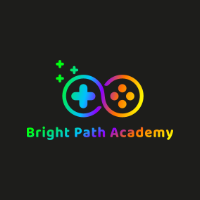Unlocking the Power of Phonics Across the Curriculum [2025 Guide]
Jun 26
Phonics goes far beyond teaching kids how to read simple words. When students use systematic phonics in every subject, they learn to crack the code of English, giving them the keys to new words in science, history, math, and more. This sparks progress and confidence not just in reading and writing, but in every classroom activity.Making phonics a part of lessons across the curriculum opens up language, helps students understand tricky terms, and lets them tackle new ideas without feeling lost. With clear, structured phonics, students spend less time guessing and more time truly understanding what they read and write. The results? Stronger spelling, better reading fluency, and bigger success across subjects.
What Is Phonics and Why Does It Matter Beyond Reading?
That’s what phonics does. Phonics teaches the relationships between letters and sounds, helping students “sound out” words accurately. This is not just the ABCs and simple words—it’s the backbone of written language. When students have a strong grasp of phonics, they’re not stuck guessing at words. They turn letters into sounds, blend them, and, before you know it, reading and writing become clear and accessible.
How Phonics Builds Reading and Writing Skills
Phonics connects the dots between what we see and what we hear. Here’s how:
Decoding: Students break down words letter by letter, matching each one to its sound.
Blending: They put those sounds together, making sense of unfamiliar words.
Spelling: With a phonics foundation, spelling moves from memorization to understanding. Kids spell what they hear and see.
Word Recognition: Repeated phonics practice helps students spot patterns, so “night” and “light” don’t trip them up.
Phonics turns reading and writing into skills anyone can learn. You don’t need a magic memory. You just need the code.
For more on how phonics sets the stage for reading, see
How Phonics Builds Reading and Writing Skills
Phonics connects the dots between what we see and what we hear. Here’s how:
Decoding: Students break down words letter by letter, matching each one to its sound.
Blending: They put those sounds together, making sense of unfamiliar words.
Spelling: With a phonics foundation, spelling moves from memorization to understanding. Kids spell what they hear and see.
Word Recognition: Repeated phonics practice helps students spot patterns, so “night” and “light” don’t trip them up.
Phonics turns reading and writing into skills anyone can learn. You don’t need a magic memory. You just need the code.
For more on how phonics sets the stage for reading, see
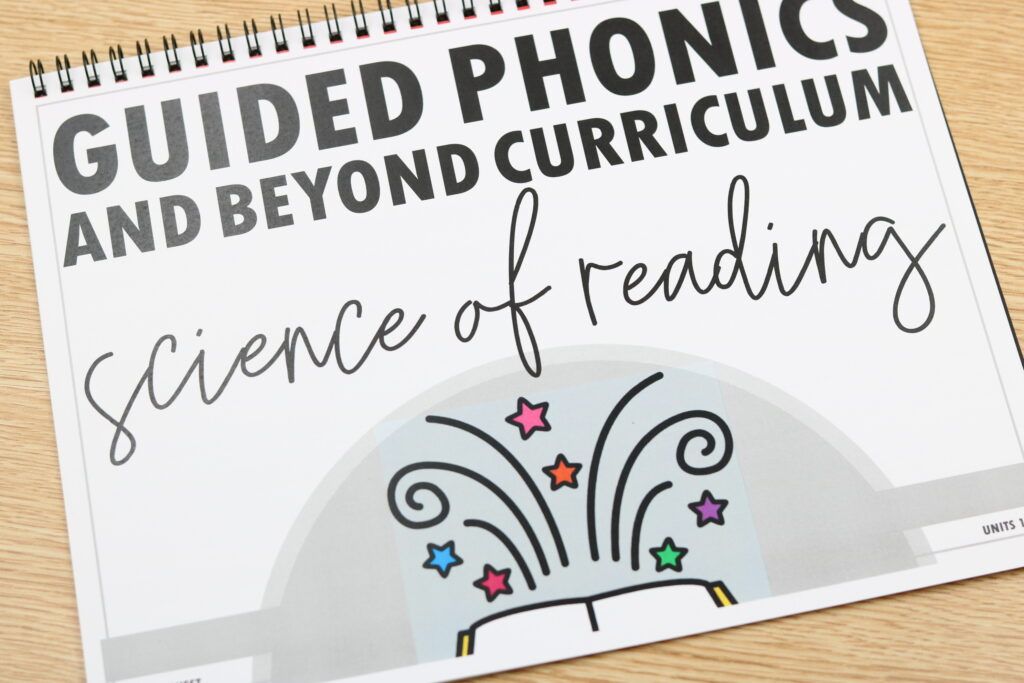
Phonics Matters in Every Subject
Phonics goes far beyond storybooks. Its power reaches into science, math, history, and more. Every subject comes packed with new words and special terms. When students understand phonics, they can:
-Read and pronounce big or technical words without feeling lost.
-Break apart tough vocabulary in context, not just in the reading corner.
-Understand root words, prefixes, and suffixes that often pop up in different subjects.
-Write clearly and with fewer errors, since spelling rules click into place.
The impact? Students move from surface-level guessing to true understanding. Mistakes drop, confidence soars, and reading doesn’t hold anyone back. Phonics is the bridge that links spoken language to written words across the curriculum.
Research highlights how a robust phonics approach not only sparks reading progress but also supports higher-level comprehension and academic fluency. To see more on this connection, check out
Phonics goes far beyond storybooks. Its power reaches into science, math, history, and more. Every subject comes packed with new words and special terms. When students understand phonics, they can:
-Read and pronounce big or technical words without feeling lost.
-Break apart tough vocabulary in context, not just in the reading corner.
-Understand root words, prefixes, and suffixes that often pop up in different subjects.
-Write clearly and with fewer errors, since spelling rules click into place.
The impact? Students move from surface-level guessing to true understanding. Mistakes drop, confidence soars, and reading doesn’t hold anyone back. Phonics is the bridge that links spoken language to written words across the curriculum.
Research highlights how a robust phonics approach not only sparks reading progress but also supports higher-level comprehension and academic fluency. To see more on this connection, check out
Why Phonics Translates to Lifelong Learning
Phonics isn’t just for young students or those learning to read. It supports long-term growth. Strong phonics skills lead to:
-Faster, more accurate reading in every subject.
-Easier learning of new words, even outside English class.
Better writing and communication, as students make sense of spelling and grammar.
When phonics is woven into every classroom, students aren’t just readers—they’re confident learners, ready for anything the curriculum brings. For a deeper dive into the science behind phonics and learning, visit
Laying the Foundation: Phonics in Literacy and Language Arts
Phonics is the heartbeat of any strong literacy program. It runs through every successful lesson, from the first sound a child learns to the moment they tackle complex words in content-rich texts. When we put intentional phonics routines at the center of language arts, we set students up for lasting progress. Every day brings opportunities to build the core skills of decoding (reading) and encoding (spelling and writing), which are the tools students use to unlock meaning and tackle bigger challenges in every subject.
Daily Decoding and Encoding Activities: Share specific examples of effective routines for building decoding and encoding skills to support reading success.
Start each morning with a quick word warm-up. Breaking words down by sound and spelling patterns helps students see the logic behind English. Here are a few tried-and-true routines:
Start each morning with a quick word warm-up. Breaking words down by sound and spelling patterns helps students see the logic behind English. Here are a few tried-and-true routines:
Word Sorts: Have students group words by spelling pattern or sound. For example, sort words with "ai," "ay," and "a_e" – all making the long "a" sound.
Sound Mapping: Use sound boxes or Elkonin boxes so students can segment and blend sounds. Say a word like "ship," let students move a counter for each sound (sh-i-p), and then write the word.
Decodable Texts: Use short books or passages that match phonics skills students are learning. This lets them practice decoding in a real reading setting without guessing.
Dictation: Read aloud simple sentences or words with target patterns, and have students write them. This connects listening, spelling, and writing.
Magnetic Letters: Build words together on a board, switching out letters to make new words. For example, swap one letter to go from "sand" to "hand," then "band."
These routines work best when paired with direct, step-by-step teaching. Consistent practice lets decoding and encoding skills take root, leading to greater fluency and confidence. For more detailed strategies, check out
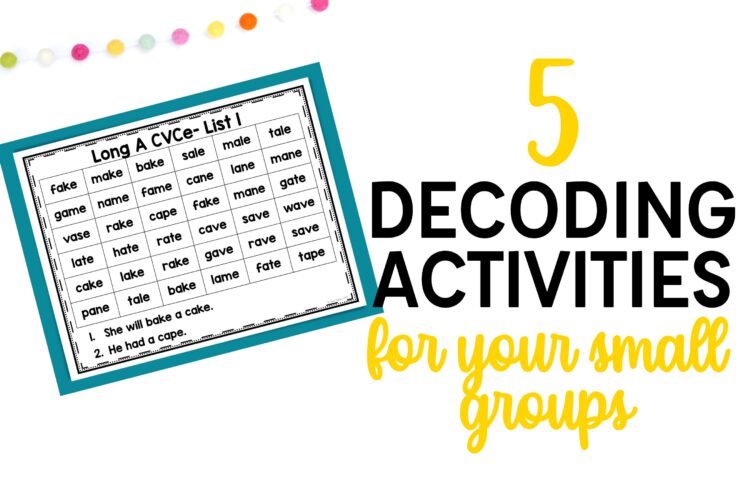
and
Supporting Struggling or Multilingual Learners: Offer visuals, sentence frames, and multisensory strategies that help all students connect sounds to written words.
Not every student picks up phonics at the same pace, but strong supports make a world of difference—especially for struggling readers and multilingual learners. Tools that engage more than one sense stick better in the brain, and visual cues make abstract ideas concrete.
Some effective scaffolds include:
-Visuals and Anchor Charts: Post pictures or word walls showing sound-spelling patterns. Use color-coding to highlight vowels, blends, or tricky parts (like silent letters).
-Sentence Frames: Give students a template, such as “I can see the ____,” helping them focus on spelling and structure instead of searching for words.
-Tactile Practice: Trace letters in sand, air, or on textured surfaces. This links muscle memory to learning each sound and letter connection.
-Gestures and Motions: Pair a motion with each sound (like tapping the table for each sound in a word). It keeps learning active and helps memory click.
-Partner Reading: Pair stronger readers with those who need more practice for repeated modeling and encouragement.
Research shows that multisensory strategies deepen learning for all readers, especially those who struggle or are learning English. For practical resources, see Multisensory Literacy Instruction: Efficacy for Struggling Readers and Phonics Strategies to Support Multilingual Learners.
Not every student picks up phonics at the same pace, but strong supports make a world of difference—especially for struggling readers and multilingual learners. Tools that engage more than one sense stick better in the brain, and visual cues make abstract ideas concrete.
Some effective scaffolds include:
-Visuals and Anchor Charts: Post pictures or word walls showing sound-spelling patterns. Use color-coding to highlight vowels, blends, or tricky parts (like silent letters).
-Sentence Frames: Give students a template, such as “I can see the ____,” helping them focus on spelling and structure instead of searching for words.
-Tactile Practice: Trace letters in sand, air, or on textured surfaces. This links muscle memory to learning each sound and letter connection.
-Gestures and Motions: Pair a motion with each sound (like tapping the table for each sound in a word). It keeps learning active and helps memory click.
-Partner Reading: Pair stronger readers with those who need more practice for repeated modeling and encouragement.
Research shows that multisensory strategies deepen learning for all readers, especially those who struggle or are learning English. For practical resources, see Multisensory Literacy Instruction: Efficacy for Struggling Readers and Phonics Strategies to Support Multilingual Learners.
Simple, visual, and hands-on routines take away the mystery of the written word, giving every student a clear path to success—no matter their starting point. If you want practical examples and printable visuals,
is a solid starting place for your classroom.
Bringing phonics into every corner of the classroom makes learning smoother, faster, and way less stressful for students. When kids learn how to decode words, they carry that skill everywhere—whether they’re reading a tricky math problem, sounding out a new science term, or digging into social studies. Let’s break down how phonics can be woven into math, science, and history to boost confidence and understanding.
Word problems can slow students down—not because they can’t do the math, but because they get stuck on the words. Phonics steps in and gives kids the tools to break down and read math questions with confidence.
Cross-Subject Strategies: Applying Phonics in Other Core Subjects
Bringing phonics into every corner of the classroom makes learning smoother, faster, and way less stressful for students. When kids learn how to decode words, they carry that skill everywhere—whether they’re reading a tricky math problem, sounding out a new science term, or digging into social studies. Let’s break down how phonics can be woven into math, science, and history to boost confidence and understanding.
Phonics in Math: Reading Word Problems and Math Vocabulary
Word problems can slow students down—not because they can’t do the math, but because they get stuck on the words. Phonics steps in and gives kids the tools to break down and read math questions with confidence.
-Decoding math vocab: Many math words, like "denominator" or "quadrilateral," use patterns students already know from phonics lessons. When kids can sound out these longer words, they focus more on the solving, not stumbling over language.
-Understanding multi-step problems: Word problems often contain words that are new or less familiar. Using phonics, students can segment and blend these words, turning a “hard word” into one they can read and understand.
-Building mental stamina: Confidence grows each time students realize they can read and understand the words in their math tasks. This encourages them to keep trying and take risks in problem-solving.
For easy ways to put this into practice, see how teachers combine spelling and math in
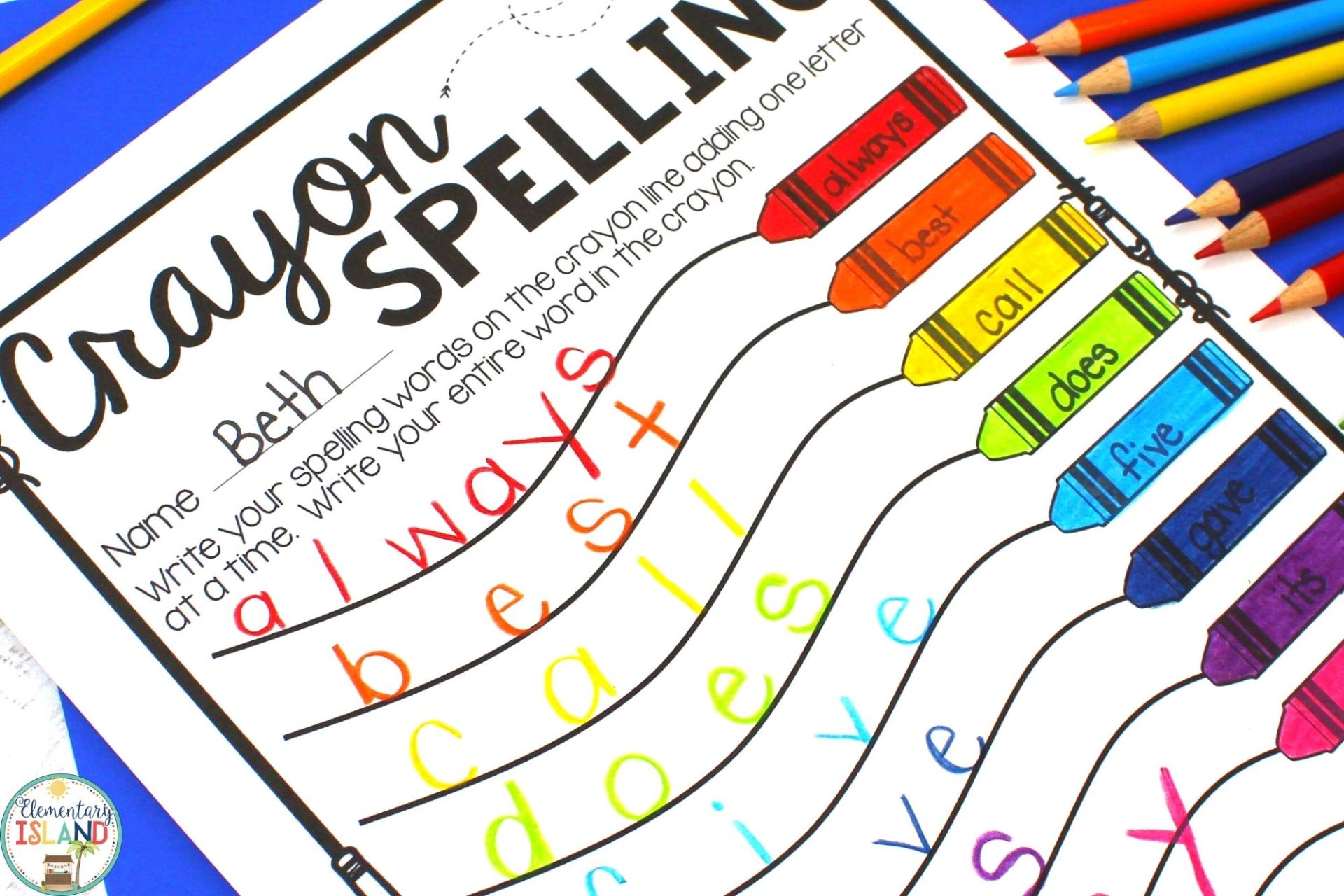
Science Texts: Decoding, Pronouncing, and Spelling New Terms
Reading science texts often means facing words kids have never seen before. Phonics turns these intimidating terms into familiar friends.
-Breaking down big science words: Teach students to spot common prefixes, suffixes, and roots (like “micro-,” “-ology,” or “bio-”). This helps them decode, say, and spell words like “microorganism” or “biology.”
-Syllable work: Encourage students to break long words into parts and match sounds to the letters. Suddenly, “photosynthesis” doesn’t look so scary!
-Visual mapping: Have students write science vocabulary and map out the sounds and letters. This helps anchor new words in memory and supports spelling later.
The benefits connect right back to the basics—letter-sound understanding is as useful in science as it is in early reading. For more on the science behind this, check out
Social Studies and History: Building Background Knowledge with Decodable Texts
History and social studies come loaded with names, events, and new terms. Phonics helps unlock these texts, so students build knowledge instead of getting shut down by unfamiliar words.
-Using content-rich decodable texts: Select texts that balance new concepts with words students can sound out on their own. This keeps reading accessible while stretching vocabulary.
-Scaffolded reading: Start with passages that match students’ current phonics level, then gradually increase the complexity.
-Connecting text to speech: As students recognize and decode key terms (“colonization,” “revolution,” “democracy”), they pronounce words correctly and remember what they mean.
Teachers who focus on phonics-based strategies in social studies find that students read more fluently and discuss topics with more confidence. For practical insights on combining reading and history, see
Bringing these strategies into every subject makes a world of difference. Students stop seeing big words as blocks and start seeing them as stepping stones—one sound at a time.
Learning to read with phonics is just the beginning. The real magic happens when students use those same sound-spelling patterns in their writing, no matter what subject they're working on. This cross-curricular approach helps students build fluency, confidence, and a habit of seeing English as something logical—not a mystery they have to guess their way through.
In math, science, or history, students face new vocabulary every day. When they apply their phonics knowledge to write these unfamiliar words, they anchor spelling patterns and become fearless with new topics. Fun, interactive writing activities help students transfer these skills from phonics lessons to independent work. Let’s look at ways to make this stick.
Interactive Writing: Practicing Spelling Patterns in Context
Interactive writing offers rich opportunities to reinforce phonics skills outside language arts. By weaving spelling patterns into quick activities, students get repeated practice that feels meaningful, not rote.
Phonics in Writing Across the Curriculum
Learning to read with phonics is just the beginning. The real magic happens when students use those same sound-spelling patterns in their writing, no matter what subject they're working on. This cross-curricular approach helps students build fluency, confidence, and a habit of seeing English as something logical—not a mystery they have to guess their way through.
In math, science, or history, students face new vocabulary every day. When they apply their phonics knowledge to write these unfamiliar words, they anchor spelling patterns and become fearless with new topics. Fun, interactive writing activities help students transfer these skills from phonics lessons to independent work. Let’s look at ways to make this stick.
Interactive Writing: Practicing Spelling Patterns in Context
Interactive writing offers rich opportunities to reinforce phonics skills outside language arts. By weaving spelling patterns into quick activities, students get repeated practice that feels meaningful, not rote.
Try these classroom activities for authentic spelling practice:
Quick Writes Across Subjects: Give students two minutes to write about a science experiment, a history fact, or how they solved a math problem. Focus on using specific sound-spelling patterns they’ve learned (“er,” “ai,” or “ch”). Share out loud, then highlight words that use the target phonics skill.
Collaborative Stories: In pairs or small groups, invite students to write a short story (or even a step-by-step solution) that must include words with the week’s spelling pattern. Throw in a challenge: How many “oa” or “igh” words can they fit into a story about a famous inventor or a science project?
Summarizing With Skill: After a lesson in any subject, have students write a summary, aiming to use as many target phonics words as they can. This practice helps reinforce decoding and encoding in context. As a bonus, it shows students the value of what they’re learning—and makes their writing stronger across the board.
Interactive Whiteboard Activities: Model and co-write sentences with students, prompting them to use a specific spelling pattern relevant to their phonics instruction and content area.
Teachers can strengthen this transfer by modeling encoding—think aloud as you write, pausing to sound out and spell tricky words together as a class. According to
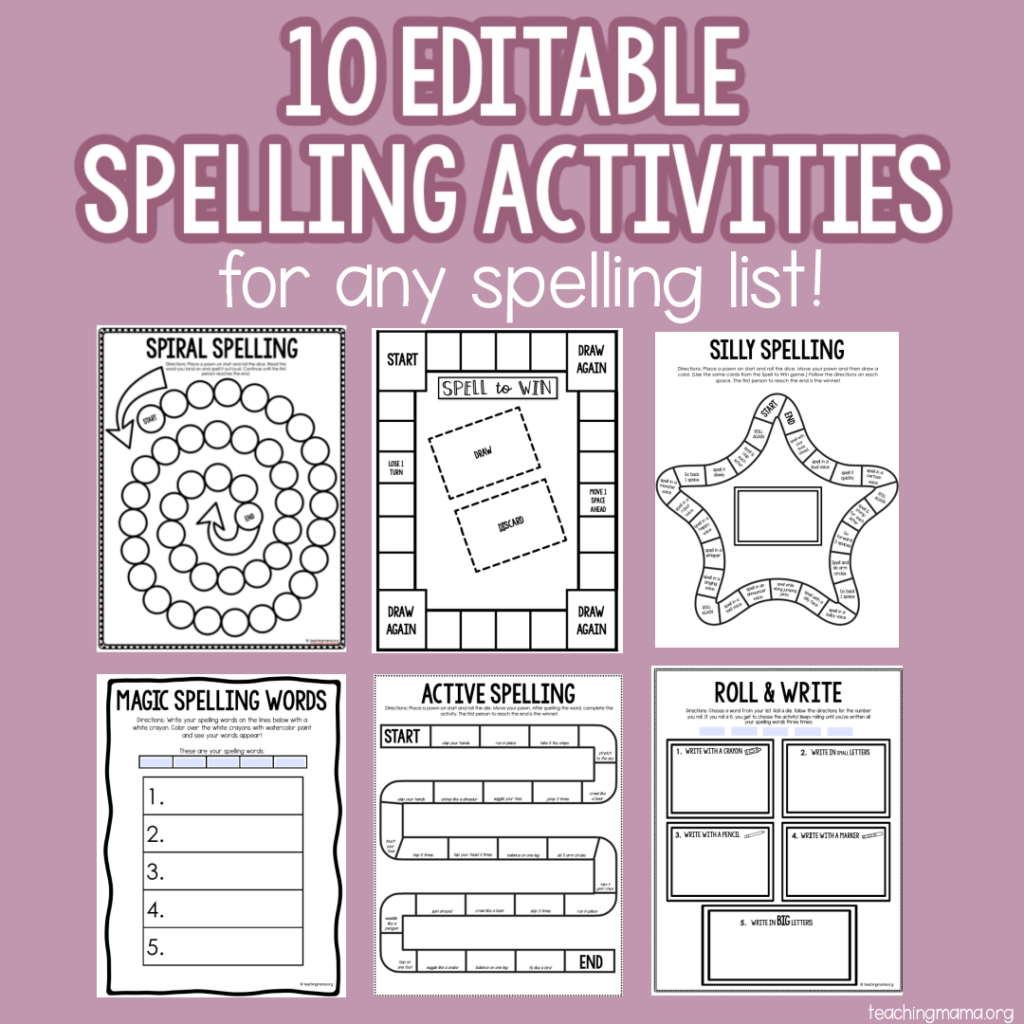
explicit modeling and frequent practice help students connect the dots between phonics knowledge and real-world writing.
Want even more practical tips? Download this
Want even more practical tips? Download this
guide packed with ways to build daily chances for students to use phonics skills when writing about every subject.
Interactive writing routines don't just improve spelling—they turn writing into a lively, confident part of every lesson. When students know their words make sense and connect to what they learn, writing becomes a tool, not a challenge.
Keeping Phonics Fun and Relevant: Activities and Resources for the Whole School Day
Interactive writing routines don't just improve spelling—they turn writing into a lively, confident part of every lesson. When students know their words make sense and connect to what they learn, writing becomes a tool, not a challenge.
Keeping Phonics Fun and Relevant: Activities and Resources for the Whole School Day
Phonics can go far beyond the basics if we let it. Making phonics both fun and relevant means weaving lively activities into every part of the school day, from morning routines to afternoon wrap-ups. When learning feels like play and fits across the curriculum, students stay eager, engaged, and ready for more. Fresh ideas and a multisensory approach light up phonics for every learner, no matter the subject.
Game-Based Phonics Activities for All Subjects
Movement and play turbocharge
phonics practice. Instead of rote drills, try activities that make students want to jump in and join the fun. Use these ideas across subject areas to keep energy up and brains buzzing:
-Phonics Relays: Turn the hallway or gym into a word-building course. Call out a sound or spelling pattern, then have teams race to the board to write words that fit, whether it's science ("ch" for "chemical") or math ("th" for "thousand").
-Sound Scavenger Hunts: Hide cards with phonics patterns around the classroom. Students hunt for matches by subject—look for "ar" in geography terms or "oi" in science words. Pair clues with a quick fact for extra learning.
-Interactive Bingo: Use a bingo board with tricky vocabulary from social studies, science, or math. Read clues aloud, and students cover the word if they can decode it.
-Word Puzzles Across Topics: Put together crosswords or word searches using focus patterns and terms from any lesson. It’s hands-on, and brains work double-time.
-Movement-Based Blending: Let students hop, clap, or jump on floor mats as they blend new words, saying each sound as they move.For more ways to bring spark to your phonics routine, check out the list on
Game-Based Phonics Activities for All Subjects
Movement and play turbocharge
phonics practice. Instead of rote drills, try activities that make students want to jump in and join the fun. Use these ideas across subject areas to keep energy up and brains buzzing:
-Phonics Relays: Turn the hallway or gym into a word-building course. Call out a sound or spelling pattern, then have teams race to the board to write words that fit, whether it's science ("ch" for "chemical") or math ("th" for "thousand").
-Sound Scavenger Hunts: Hide cards with phonics patterns around the classroom. Students hunt for matches by subject—look for "ar" in geography terms or "oi" in science words. Pair clues with a quick fact for extra learning.
-Interactive Bingo: Use a bingo board with tricky vocabulary from social studies, science, or math. Read clues aloud, and students cover the word if they can decode it.
-Word Puzzles Across Topics: Put together crosswords or word searches using focus patterns and terms from any lesson. It’s hands-on, and brains work double-time.
-Movement-Based Blending: Let students hop, clap, or jump on floor mats as they blend new words, saying each sound as they move.For more ways to bring spark to your phonics routine, check out the list on
Multisensory Strategies Anytime, Anywhere
When students use more than one sense, learning sticks. Multisensory methods aren’t just for reading time—they fit wherever you teach a new word or spelling pattern.
When students use more than one sense, learning sticks. Multisensory methods aren’t just for reading time—they fit wherever you teach a new word or spelling pattern.
-Say, Touch, Spell: Students say a word, tap out each sound, and then spell it on their fingers, at their desks, or even on the whiteboard.
-Sand, Playdough, and Air Writing: Let students form letters or words in sand trays, with playdough, or just by “writing” with their finger in the air as they speak the sounds.
-Hear and Draw: Play a sound from the day’s lesson, and students draw a matching picture or diagram from that subject area (think: drawing a plant for the "pl" blend in science).
-Build and Sort: Mix science, math, or social studies words into your morning word-sort routine. Students sort them by spelling pattern, subject, or both.
For more ideas on multisensory instruction, visit
Resources for Keeping Phonics Lively All Day
You don’t have to reinvent the wheel to get students excited about phonics. Reliable, ready-to-use resources can save time and boost results. Try these options:
For easy-prep routines that work across any grade level, check out
You don’t have to reinvent the wheel to get students excited about phonics. Reliable, ready-to-use resources can save time and boost results. Try these options:
-Printable game boards for phonics bingo and relays (many are free online).
-Pre-made crosswords and word searches sorted by topics and word families.
-Quick digital activities that work on any device.
-Anchor charts and visual word walls that change for each subject.
For easy-prep routines that work across any grade level, check out
and
Assessment, Motivation, and Seeing Phonics Progress
Quick Check-Ins: Catch Growth in the Moment
No one wants to wait weeks to see progress. Frequent check-ins make tracking phonics skills easy and stress-free. Try these quick tools during lessons:
-Exit Slips: At the end of class, give each student a sticky note to write a new word they learned or spell a focus sound. Collect as they leave.
When phonics is woven into every part of the school day, it’s important to check in on how students are growing and keep them fired up. Regular assessment does not have to feel like a quiz—it can be light, fast, and even fun. Combining clear progress checks with playful review and joyful celebration turns phonics from a routine into a highlight of the school day. This section breaks down how you can track gains, keep students motivated, and put growth on display.
Quick Check-Ins: Catch Growth in the Moment
No one wants to wait weeks to see progress. Frequent check-ins make tracking phonics skills easy and stress-free. Try these quick tools during lessons:
-Exit Slips: At the end of class, give each student a sticky note to write a new word they learned or spell a focus sound. Collect as they leave.
-Whiteboard Races: Everyone writes the word or pattern you call out on their mini board and holds it up. Instant feedback, instant smiles.
-Partner Checks: Pairs quiz each other on word lists or new patterns for one minute. Fast, social, and easy for all ages.
-Thumbs Up/Down: After practicing a sound, ask students to show thumbs up if they’re confident, sideways if they need more practice. Spot-check skills without stopping instruction.
Regular, small checks give you real-time data and tell students their growth matters every day. For more creative strategies, see these
Review Games: Make Practice Playful
Phonics review doesn’t have to be boring worksheets. Games spark energy and invite everyone to dive in. Switch up activities to match your classroom’s vibe and keep students on their toes. Some favorites include:
Phonics review doesn’t have to be boring worksheets. Games spark energy and invite everyone to dive in. Switch up activities to match your classroom’s vibe and keep students on their toes. Some favorites include:
-Four Corners: Place four sounds or patterns around the room. Call out a word, and students move to the correct corner.
-Musical Chairs: Tape word cards to chairs. Play music, then pause—whoever sits must decode or use the word in a sentence.
-Phonics Bingo: Each square contains a sound, blend, or word. Call out clues or words, and students cover matches.
-Mix and Fix: Scramble magnetic letters or cards, and time the class to build as many words as possible.
Games like these invite movement, laughter, and healthy competition. They turn skill review into a session students won’t want to skip! Get inspired with more
and printable
Student-Led Celebrations: Put Progress on Display
When students spot their own growth, motivation soars. Student-led celebrations give kids a strong sense of ownership and pride. Here are ways to make accomplishment visible:
Looking for tools to help organize student goals and strengths? Try templates for
When students spot their own growth, motivation soars. Student-led celebrations give kids a strong sense of ownership and pride. Here are ways to make accomplishment visible:
-Phonics Portfolios: Every student builds a collection of their best work—decodable sentences, tricky word lists, or stories packed with new patterns.
-Goal Setting: Let kids set small goals (like “mastering the “sh” sound in science vocabulary”). Once they reach it, let them share with the class.
-Showcase Days: Set aside time each week for “Phonics Stars,” where students read aloud a favorite sentence, explain a tough spelling, or share something they’ve nailed.
-Peer Feedback: Create space for friends to cheer each other on and give compliments about progress. This boosts both confidence and teamwork.
Looking for tools to help organize student goals and strengths? Try templates for
Documenting Growth: Track Progress, Build Confidence
Keeping a record of small wins stacks up to big progress. Simple methods include:
-Progress charts where students track new patterns they’ve conquered.
Keeping a record of small wins stacks up to big progress. Simple methods include:
-Progress charts where students track new patterns they’ve conquered.
-Phonics journals with a page for each new skill or sound.
-Sticky notes on a wall-size “Word Growth Tree” for each new word or tricky pattern learned.
Regular reviews of these records help students see how far they’ve come—and remind them that effort leads to results. Joyful documentation and celebration keep interest and effort high throughout the year. For more ideas on building awareness and celebrating gains, dive into these
With a routine of quick checks, playful review, and student-led celebration, phonics progress becomes clear, exciting, and something everyone wants to show off.
Conclusion
Phonics delivered with care and consistency unlocks a brighter path for every learner, no matter the subject. By making phonics part of every classroom routine, teachers set students up to read, spell, and write confidently in math, science, social studies, and beyond.
Families and educators hold the keys to lasting growth when they champion daily practice, playful activities, and positive feedback. Every sound and spelling pattern learned helps students tackle big words, new ideas, and new challenges.
Let’s keep building classrooms where students see words as tools, not obstacles. Try out a new phonics strategy this week and celebrate every step forward—because strong phonics skills shape strong, curious learners for life. Thank you for caring about how kids learn best. Your passion makes all the difference. If you have a favorite tip or want to share what works in your classroom, leave a comment below!
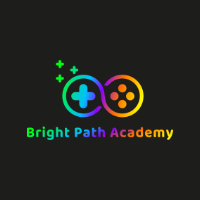
372 West Lucille Lane, Schenectady, New York 12306
Phone number: 838-269-9430
Phone number: 838-269-9430
Copyright © 2025
Write your awesome label here.
Write your awesome label here.
